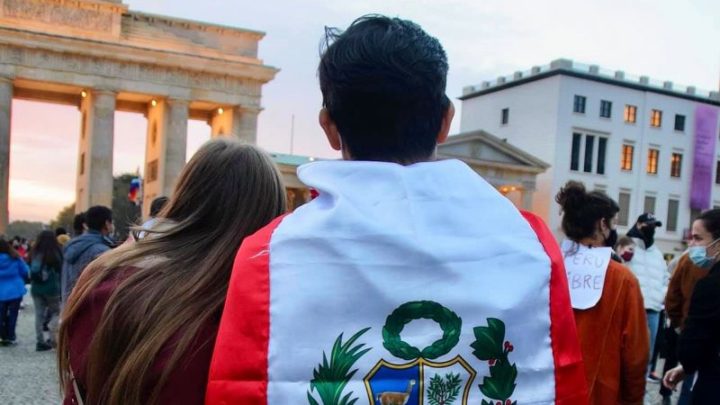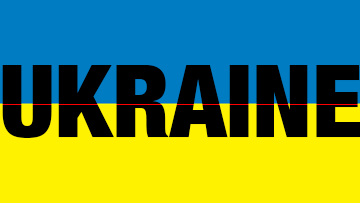What happened in Peru was not ‘just another emergency’
As a Peruvian living in Germany, the main way for me to find out what was going on in Peru was through Peruvian social networks and the Peruvian press. The coverage in Germany on the subject has been minimal, and within the limited amount I have seen, most has come from sources that specialize in covering current issues in Latin America (such as the Deutsche Welle network in Spanish). A cousin of mine, a Peruvian woman in the United States, told me exactly the same thing: the media there have not covered the demonstrations in Peru either. And I doubt that these are isolated cases.
Between November 9 and 17, Peru was shaken by large civic demonstrations that were brutally repressed by the security forces. The protesters blamed Congress for unconstitutionally removing the country’s president from office. Although the demonstrations calmed down after Francisco Sagasti was nominated as the new president until the next elections, it sparked a political crisis that continues to this day.
The way the international press dismisses news coming from developing countries takes me back to anthropologist Greg Beckett’s concept of “normal emergency.” Beckett points out that these countries are seen from abroad as always being in a state of emergency, so much so that the nuances are missed when events happen at unprecedented levels. So, those extreme situations are not given the proper coverage, because every emergency, even the most serious, is “just another emergency” from the outsider’s point of view. I came to the conclusion, after seeing the absence of an analysis that goes beyond the actual events, that the international press was also considering the events in Peru to be a “normal emergency.”
In this sense, the international press failed to recognize in a timely fashion that the type of emergency that Peru went through last November was something much more complex than a demonstration: on the one hand, it is a historical milestone in the contemporary political life of Peru; and on the other hand, within the international community, it represents another case of police violence and human rights abuses.
First of all, it is a turning point because it was the first time in contemporary history that such a demonstration took place in which the majority of the protesters were not politicized. This makes me think about what author Carlos León Moya points out when he says “we work in a counterintuitive way: it is not ‘first you organize, then you march;’ it is ‘first you march, then you organize.’” The vast majority of protesters have no affiliation whatsoever to political organizations or parties, and they certainly won’t have any in the future, either. But this has not been a prerequisite for going out to protest. It seems that the condition, more than anything else, is that we are weary; we are tired of our political leadership, so we go out to protest.
And the fact that they have been able to jump over pre-existing organizations and still protest effectively points to Leon Moya’s second reflection: the relevance of internet and virtual communities to rallying people and relaying information (from sharing the techniques used in Hong Kong to neutralize tear gas bombs, to spreading the list of those who disappeared after the demonstrations).
At the end of November, we learned that 13 per cent of the nation actively participated in the protests and 73 per cent of the nation has expressed support for the protesters. This has now become part of the contemporary history of Peru, for this is the first time since the March of the Four Corners that so many Peruvians have come together for a common cause. It is for this reason that I have been struck by the relative lack of importance given to the case in the press at the global level.
Also, I am shocked that the international press has not highlighted the blatant violation of human rights by the Peruvian National Police: almost a hundred people injured, dozens of young people disappeared for days, and two dead in a country that is (in principle) a democracy. How is it possible that the foreign press does not consider this to be newsworthy?
The year 2020 will not be remembered only as the year of COVID-19 on the global scene, but also as a year in which police forces around the world have shown that they can trample on the right to protest, and on human rights in general: we have witnessed police brutality in the United States against the Black Lives Matter protesters; the unjustifiably violent response by the police to people demonstrating against SARS in Nigeria, and we have also seen how the Free Youth movement in Thailand faced harassment and intimidation by the Thai Armed Forces.
Don’t we see a pattern? The level of police violence in Peru between November 9 and November 15 is easily compared to the events in the United States, Nigeria, and Thailand as mentioned above. The Peruvian case is yet another compelling example of why this type of situation is not only a national problem, but also a problem for the global community, and why it is so urgent that the authorities respond not only to local justice but also to the entire global community who are defending human rights.
Counting on the global community as allies to put pressure on the authorities in cases of abuse of power would be a precious resource to help balance the power between the governments and its citizens and thus increase the degree of power of the average citizen. We already have technology on our side to do this. But the ability of individuals to get their message across on the Internet is still far from having the same reach or impact as the institutionalized press, both nationally and even more so, internationally.
Therefore, I think it is coherent with the mission of journalism as a discipline that the press—not only Peruvian or Latin American, but global—should also be concerned with what is happening in Peru and anywhere else in the world, especially when it is an issue that directly concerns human rights. There are no normal emergencies.










